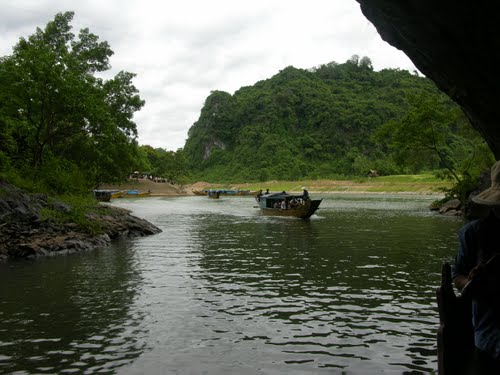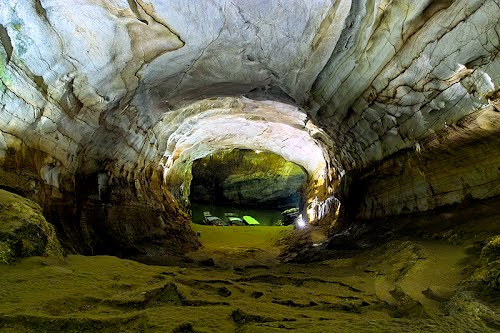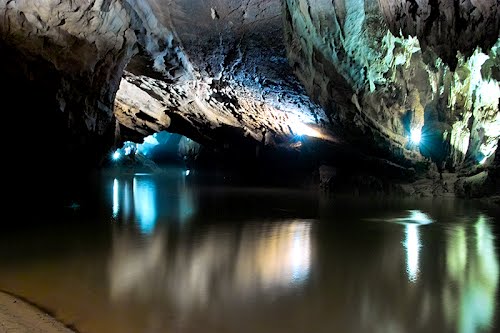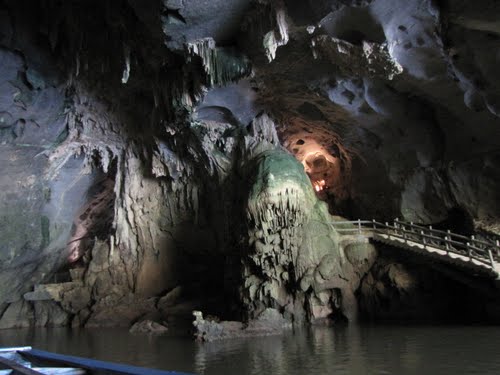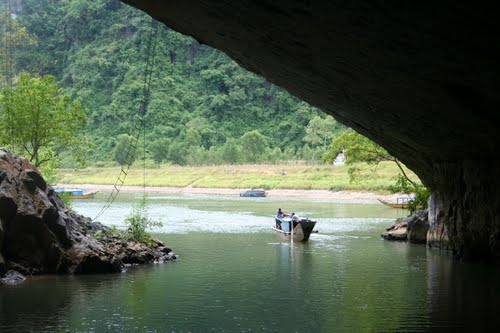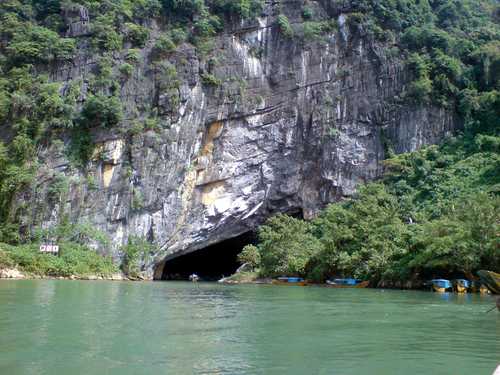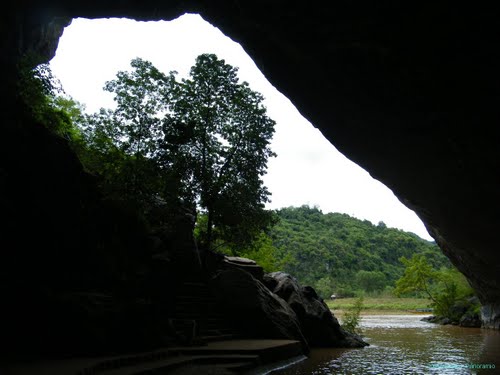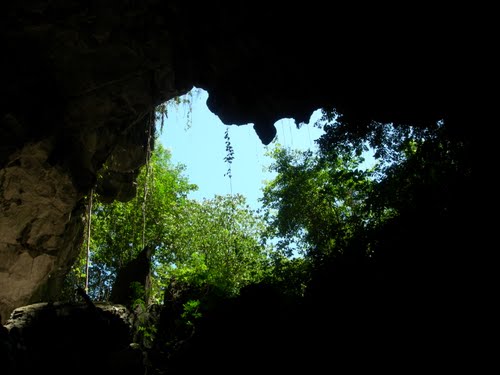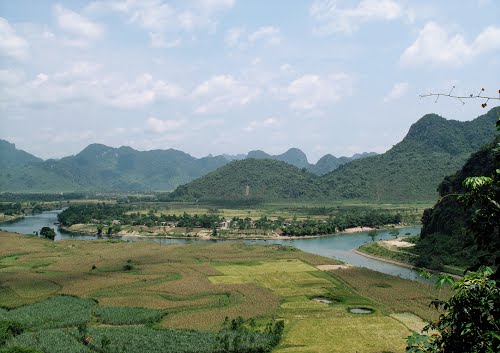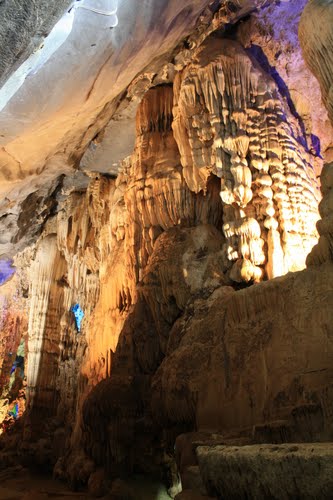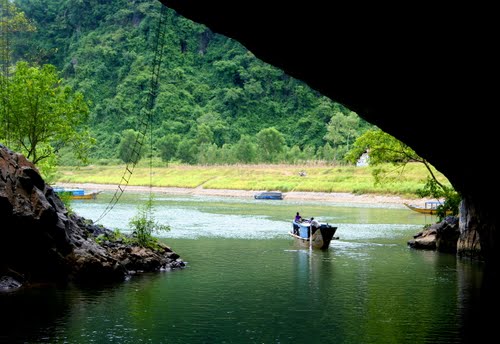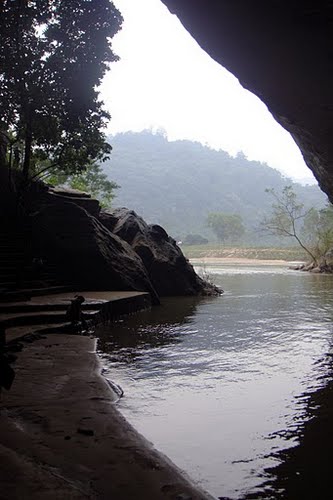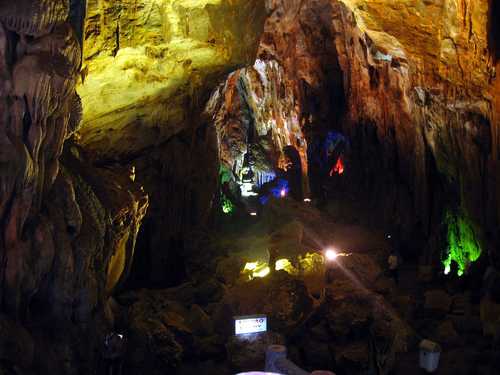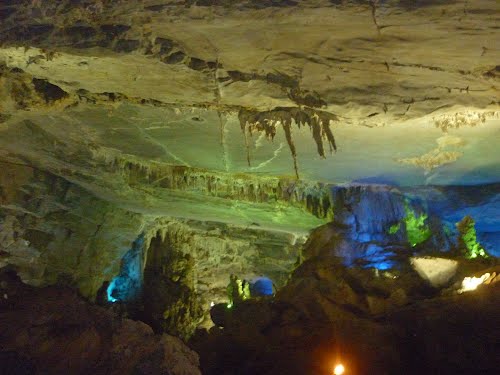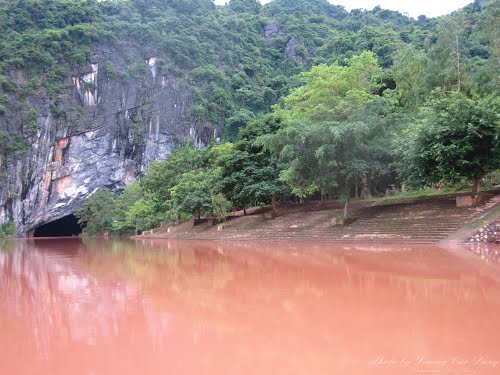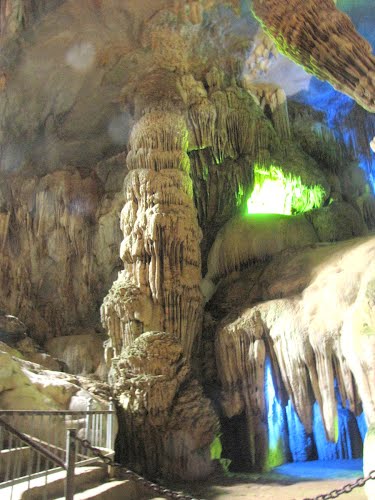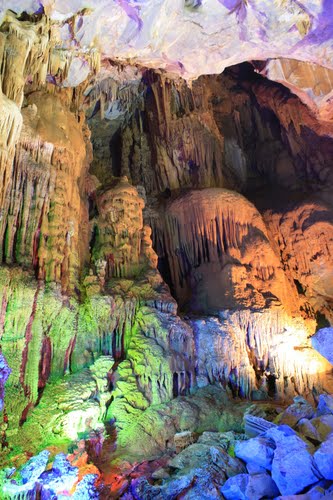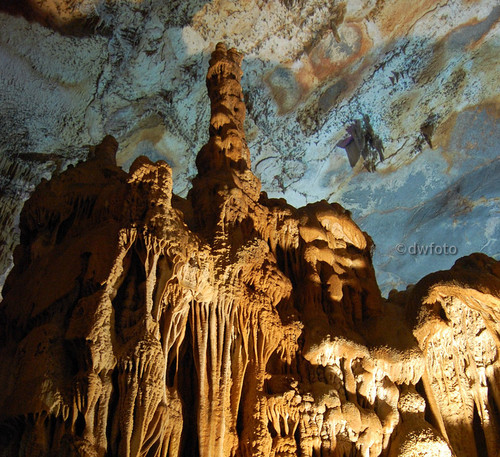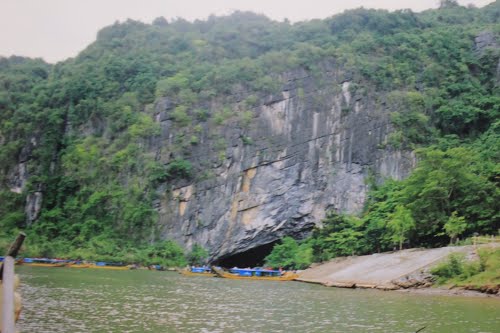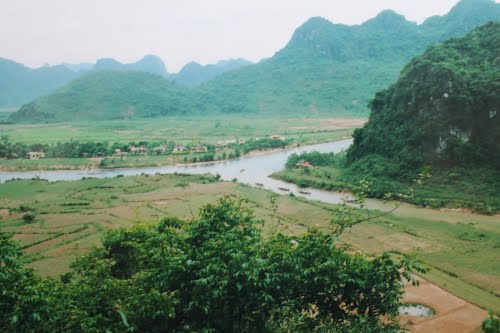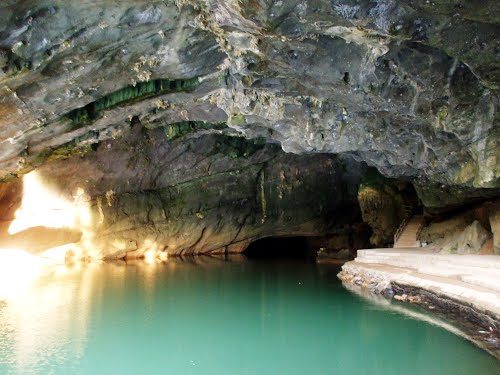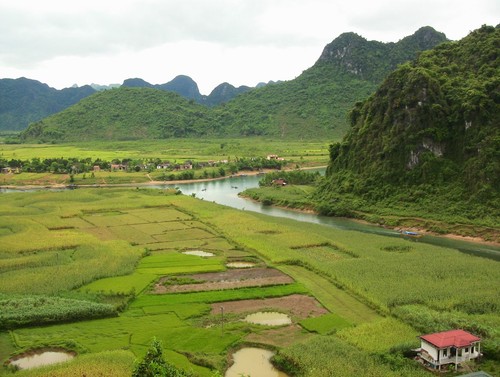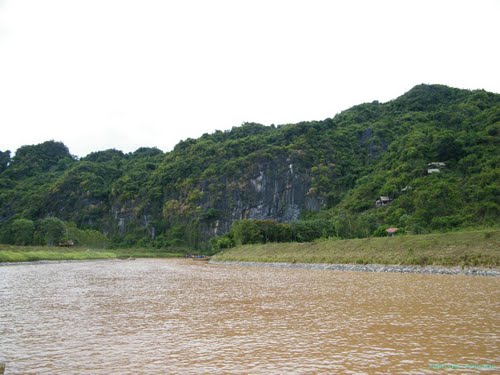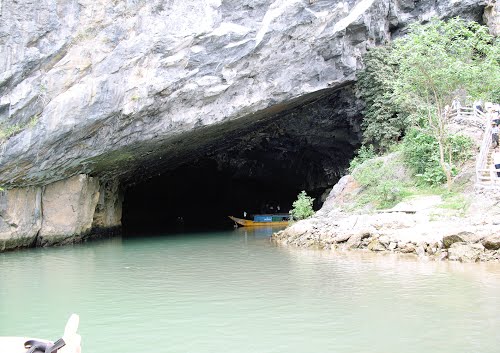Phong Nha-Ke Bang is a national park and UNESCO World Heritage Site in the Bo Trach and Minh Hoa districts of central Quang Bình Province in the North Central Coast region, about 500 km south of Hanoi. The park borders the Hin Namno Nature Reserve in Khammouane Province, Laos to the west and 42 km east of the South China Sea from its borderline point. Phong Nha–Ke Bang National Park is situated in a limestone zone of 2,000 km² in Vietnamese territory and borders another limestone zone of 2,000 km² of Hin Namno in Laotian territory. The core zone of this national park covers 857.54 km² and a buffer zone of 1,954 km².
The park was created to protect one of the world's two largest karst regions with 300 caves and grottoes and also protects the ecosystem of limestone forest of the Annamite Range region in North Central Coast of Vietnam.
Phong Nha-Ke Bang is noted for its cave and grotto systems as it is composed of 300 caves and grottos. A 2009 survey brought the total discovered length of the cave system to about 126 km, with many areas still not well explored. The Son Doong Cave, which was discovered in the 2009 survey by British and Vietnamese explorers, is considered the largest cave in the world. Even before this discovery, Phong Nha held several world cave records, including the longest underground river as well as the largest combined caverns and passageways.
The park derives it name from Phong Nha Cave, containing many fascinating rock formations, and Kẻ Bàng forest. The plateau on which the park is situated is probably one of the finest and most distinctive examples of a complex karst landform in Southeast Asia. This national park was listed in UNESCO's World Heritage Sites in 2003 for its geological values as defined in its criteria viii. In April 2009, the world's largest cave, was re-discovered by a team of British cave explorers of the British Caving Association led by a local farmer named Ho Khanh.
History of exploration
Champa inscriptions carved on steles and altars in the cave demonstrate that people had inhabited the cave long before the area was annexed by Vietnam in the Nam tien or southward expansion. In 1550, Duong Van An was the first Vietnamese man to write about Phong Nha cave. This cave was depicted in 9 urns in the Citadel of the Nguyen Dynasty in Hue. In 1824, The cave was conferred the title "Dieu ung chi than" by King Minh Mạng.
In the late 19th century, Leopold Michel Cadiere, a French Roman Catholic priest, conducted an expedition to explore Phong Nha cave, where he discovered Champa scripts. He proclaimed Phong Nha cave "The number one cave of Indochina". In July 1924, an English expeditionist stated that Phong Nha cave is second to none of famous caves of Padirac (France), Cuevas del Drach (Spain). In 1935, a local inhabitant accidentally discovered a beautiful cave 1 km from the mouth of Phong Nha cave, at an elevation of 200 meters. It was called Tien Son cave, or Dry cave because its inside landscape is similar to fairy-tales and it has no underground river.
In 1937, the Bureau of Tourism of French Resident Superior issued a brochure to introduce tourism in Quang Bình and Phong Nha Cave was included in this introduction. This tour site is ranked second in French Indochina. Before 1990, several explorations were conducted by Vietnamese and foreign groups but the mystery of this area still remained. From 1990 on, there marked a turning point in discovering activities, from exploration to research, thus full documents for submission to UNESCO for World Natural Heritage nomination were made available.
N 1990, for the first time, Hanoi University accepted the cooperation proposal of the British Cave Research Association. They combined efforts in exploring and researching caves and grottoes in the area comprehensively. The first exploration was conducted in 1990 by a group from the British Cave Research Association and Faculty for Geology and Geography of Hanoi University, led by Howard Limbert. They completed research of a large part of Vom Cave. In 1992, the second exploration was conducted by a group of 12 British scientists, six professors from Hanoi University. This time, this group completed their exploration of 7,729 m of Phong Nha Cave and 13,690 m of Vom Cave and adjacent caves and grottos. In 1994, a third exploration was carried out by a group of 11 British scientists and five Vietnamese professors of Hanoi University. In 1999 scientists from the Vietnam-Russia Tropical Centre also conducted zoological and botanical surveys in the Ke Bang area. Based on the results of these three explorations, more information about the caves and grottoes made available to the Vietnamese and local government for the protection, planning, and tourism development of this park.
In 2005, scientists from the British Cave Research Association discovered a new cave and named it Paradise Cave. The newly discovered cave was acclaimed by the British scientists as "the largest and the most beautiful cave in Phong Nha-Ke Bang area".
On June 1, 2006, the Ministry of Culture and Information of Vietnam issued a stamp collection of depicting various landscapes found in Phong Nha-Ke Bang.
In April 2009, a group of cave explorers from British Caving Association conducted survey in this park and adjacent areas. The biggest chamber of Sơn Đoòng is more than 5 km in length, 200 m high and 150 m wide. With these dimensions, Son Doong overtakes Deer Cave in Malaysia to take the title of the world's largest cave. At the same time they found new caves and grottoes in the park and adjacent area. In this survey, the cave British explorers discovered 20 new caves with total length of 56 km, including world's largest cave, Son Doong.

